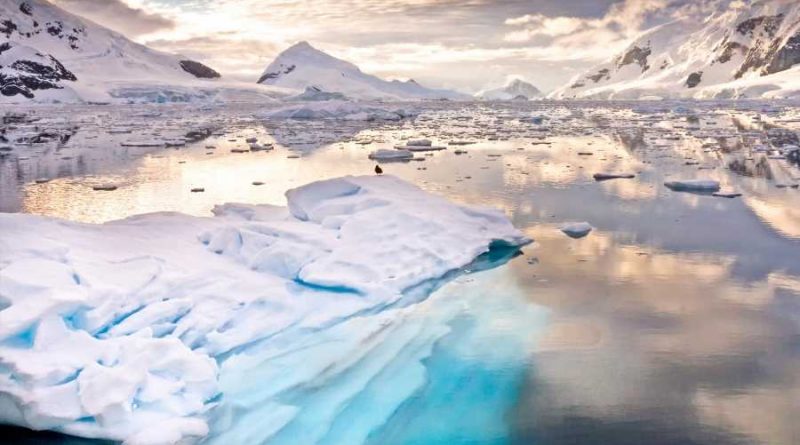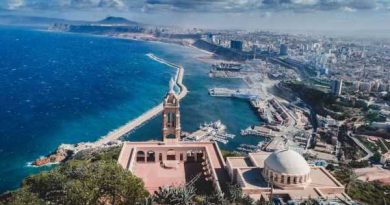Is Sustainable Travel to Antarctica Actually Possible?
Antarctica: a traveler’s final frontier. Once the other six continents get marked off a checklist, this destination sings out like a siren, tempting those curious enough to heed the call. Will the journey be long? Yes, expect at least four days through the nausea-inducing Drake Passage. Will it put a dent in your wallet? Absolutely, with the most basic of expeditions costing thousands of dollars. But, if you save up, have the time off of work, and can handle seasickness, you can experience the largely uninhabited southernmost continent.
But should you?
Every year, more intrepid travelers make their way to Antarctica. According to the International Association of Antarctic Tour Operators (IAATO), over 55,000 people traveled to the continent for the 2018-2019 season. This marks a 53% increase from the 2014-2015 season.
Of course, 2020 has been a bit different. With strict stay-at-home orders, domestic travel restrictions, and global flight bans, travelers hoping to cross this experience off of their bucket list have had to wait a while longer. Could that be for the best though? After all, concerns of over-tourism plagued the travel industry pre-pandemic, with certain destinations appearing on the 2020 Fodor’s No List. Maybe nature could use the break.
Even when travel resumes, though, a growing interest in tourism won’t immediately turn the Antarctic peninsula into the likes of overcrowded Barcelona or Big Sur—after all, people save and plan for years for this kind of trip. Still, it’s impossible to ignore the headlines of rapidly melting glaciers and abnormally warm waters and not feel a bit of concern for the planet. For some, it creates an even bigger push to go there, a trend dubbed “last-chance tourism.” For others, there is concern regarding if any form of travel to the continent, both past and in the future, is sustainable at all.
Antarctica has long been a place dedicated to research. The Antarctic Treaty, signed in 1959, established the continent as a scientific preserve, a safe place for scientists of different nationalities to conduct their work in peace at their respective research stations. Then, in 1966, Lars-Eric Lindblad (founder of Lindblad Expeditions) brought the first passenger ship to Antarctica, and regular sightseeing flights began in 1977.
But the Antarctic Treaty wasn’t put into place for tourism—that’s where IAATO comes in. The member organization, established in 1991, advocates for responsible tourism in Antarctica. Today, IAATO includes over 100 companies from around the world, all of whom follow strict guidelines. For example, people must carefully clean all of their clothing and equipment (from gloves to tripods) before setting foot on Antarctica, and only 100 visitors maximum can go ashore at a dedicated landing site. And while membership to IAATO is voluntary, currently all tours on passenger ships to Antarctica are operated by members.
But even by following these rules—walking only in the designated areas, leaving no trace, and keeping a healthy distance from wildlife—do tourists still leave an impact?
“Yes, we have an impact,” admitted Karin Strand, VP Expedition of Hurtigruten and Godmother of the MS Roald Amundsen, a vessel that made history in November 2019 as the first hybrid electric-powered passenger ship to sail to Antarctica. Karin began traveling to Antarctica in 2002 and has since been there over 140 times.
“But what I’ve been pondering over the last 18 years is, what is that impact?” she continued. “If we walk on the snow, that impact is temporary because when the snow melts our footprints will be gone. If we were walking on moss or lichen our impact would be more permanent, but we’re not. That’s part of the rules and regulations—we avoid all kinds of areas where we will make a lasting impact in a negative way.”
Karin gave the example of a landing site called Aitcho. Over time, the path used there grew in width from people going up and down it, and as a result that particular area closed to visitors. It remains closed, but after only a few years it has recovered.
“The mantra here is we leave minor to transitory impact,” Karin added. “When I see how little the landing sites have changed over the last 18 years, I have great faith in the way we are managing the sites.”
Tourism can also have a positive impact by getting travelers involved in research. Allison Cusick is a graduate student pursuing her Ph.D. at Scripps Institution of Oceanography at UC San Diego in the lab of Dr. Maria Vernet, and she created a citizen science project with Ph.D. student Martina Mascioni. Their project, Fjord Phyto, examines phytoplankton communities in the fjords of Antarctica with the help of travelers. Allison leads small groups on Zodiac boats to use some of the same tools oceanographers use, measuring things like the water’s salinity or transparency. This can highlight shifts throughout the seasons and how that might relate to the amount of freshwater present from melting glaciers.
“I had a gentleman tell me one year that when he did the science boat, he felt, for the first time in a long time, that childlike spark of curiosity,” Allison recalled. “I was like, ‘Oh my god, that’s what I’m looking for.’ That’s the whole point. People get a glimpse into the scientific process because they actually do it themselves.”
Global warming is the bigger issue—and perhaps by experiencing Antarctica firsthand, it will make people stronger advocates for the environment when they return home.
Baba Dioum, a forestry engineer, famously said, “In the end, we will conserve only what we love; we will love only what we understand; and we will understand only what we are taught.” While it’s a sad truth that the glaciers on the Antarctic Peninsula are retreating (a whopping 87% of them), going ashore to snap photos of adorable penguins isn’t the real problem here. Global warming is the bigger issue—and perhaps by experiencing Antarctica firsthand, it will make people stronger advocates for the environment when they return home.
“We all come down to Antarctica because we love how wild it still is,” added Allison. “So how do you keep it that way?”
While you patiently await the chance to safely travel again, you can take the time now to reflect on preserving the wildness of any place you visit. What more economical options do you have for transportation? In what ways can you be more ethical with your animal interactions while traveling? How can you embrace nanotourism, a type of travel that eschews over-tourism and instead focuses on meaningful interactions? These kinds of questions can guide travelers to make any trip more sustainable.
Specifically, in regards to Antarctica, Karin added one last bit of good news: profit isn’t the driving force for tourism there. “The people who run this business, more or less, are people with the right academia who are not driven by money.” With scientists making the guidelines and submitting recommendations to the treaty and the polar institutes of the world, the tour companies—and, in turn, tourists—must follow these if they want to experience the continent for themselves. “That’s what makes me so hopeful.”
Source: Read Full Article




